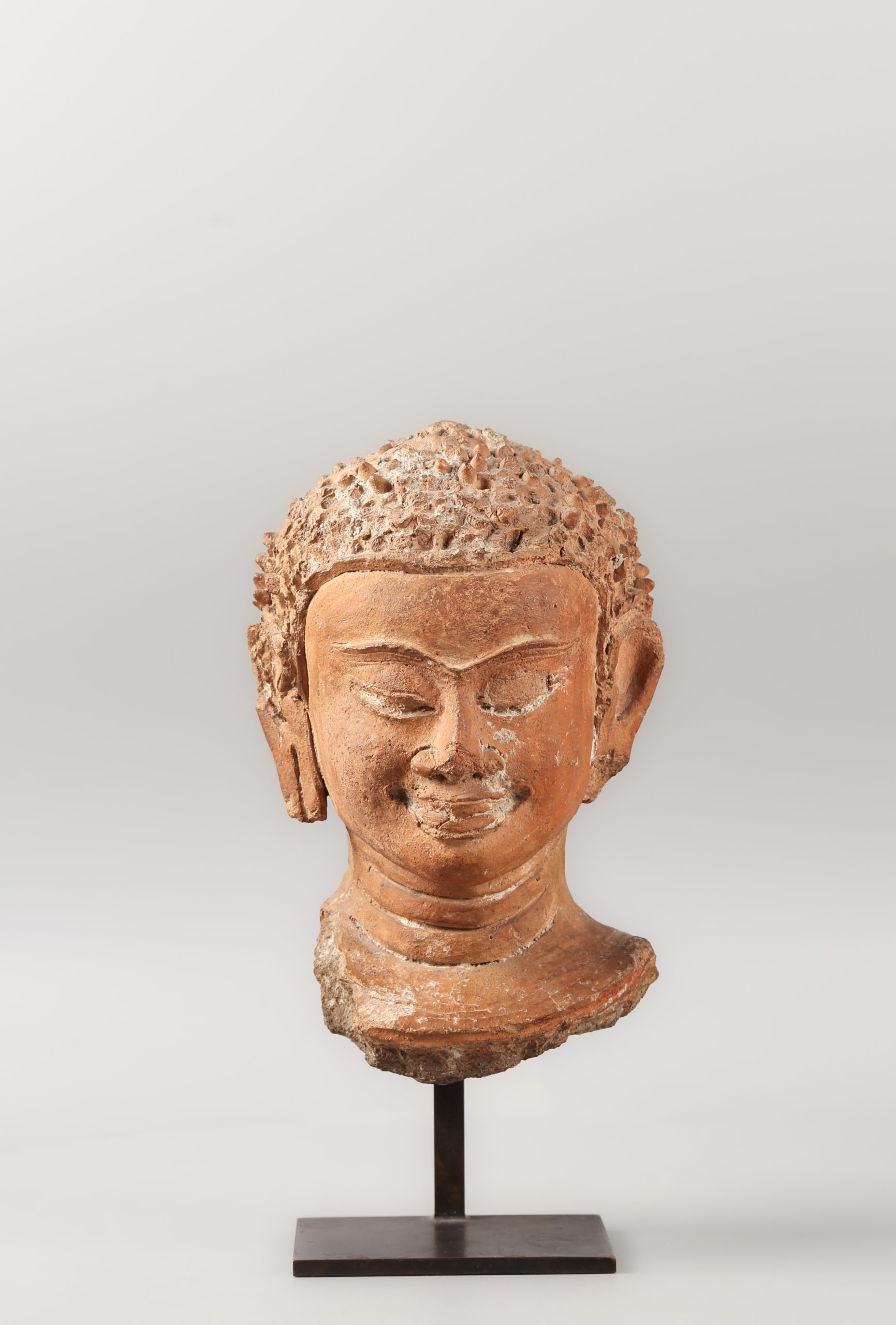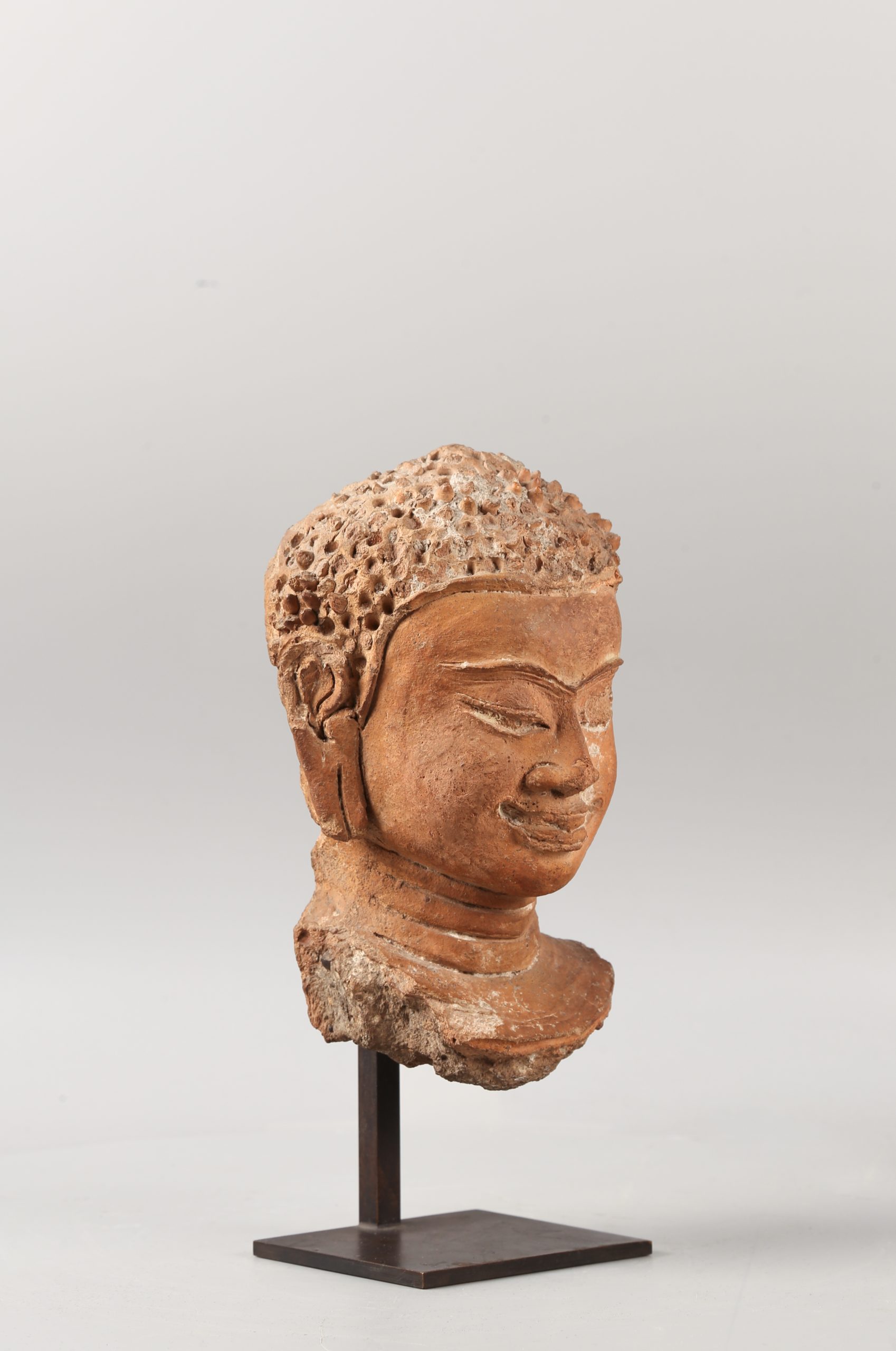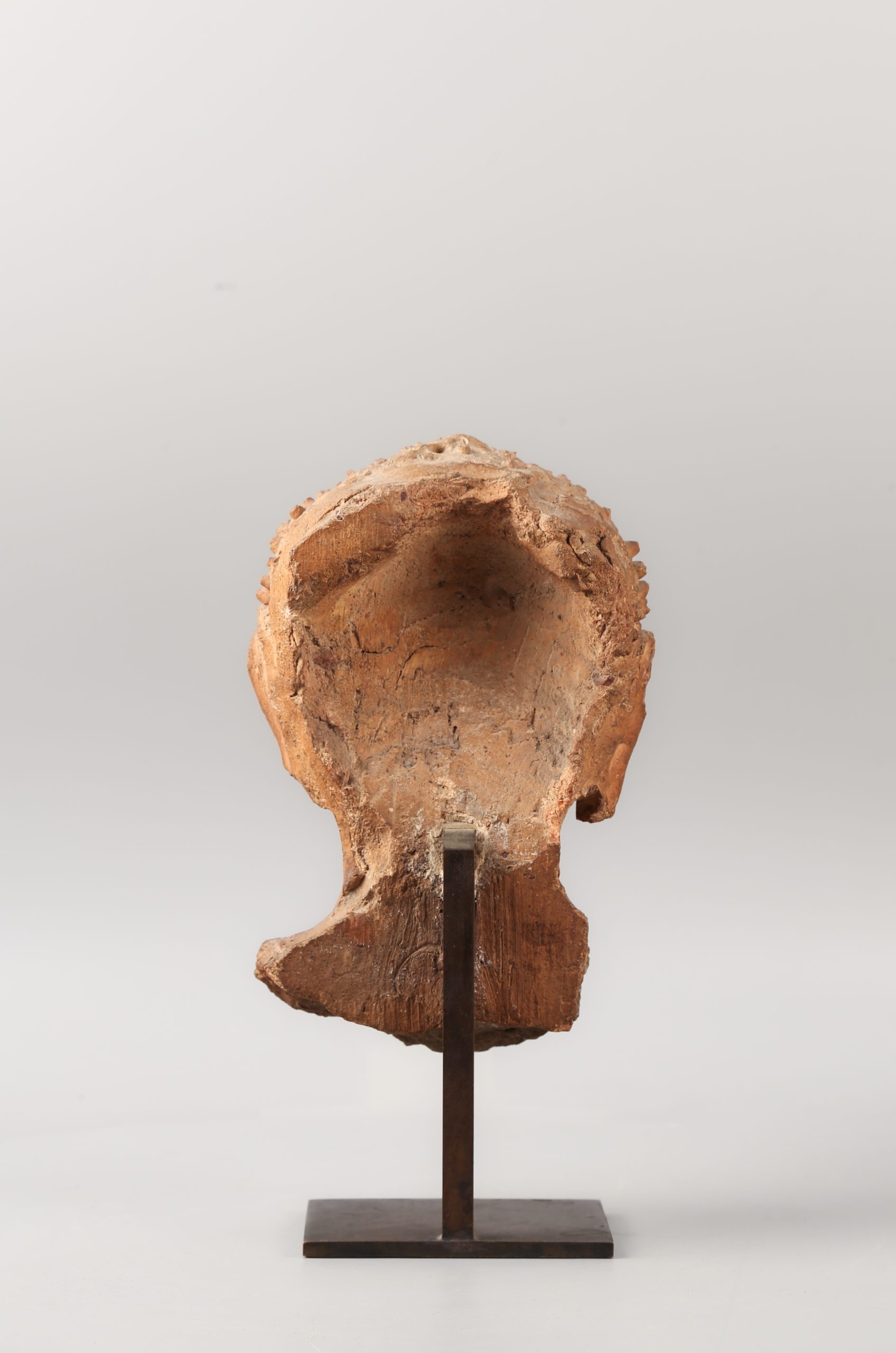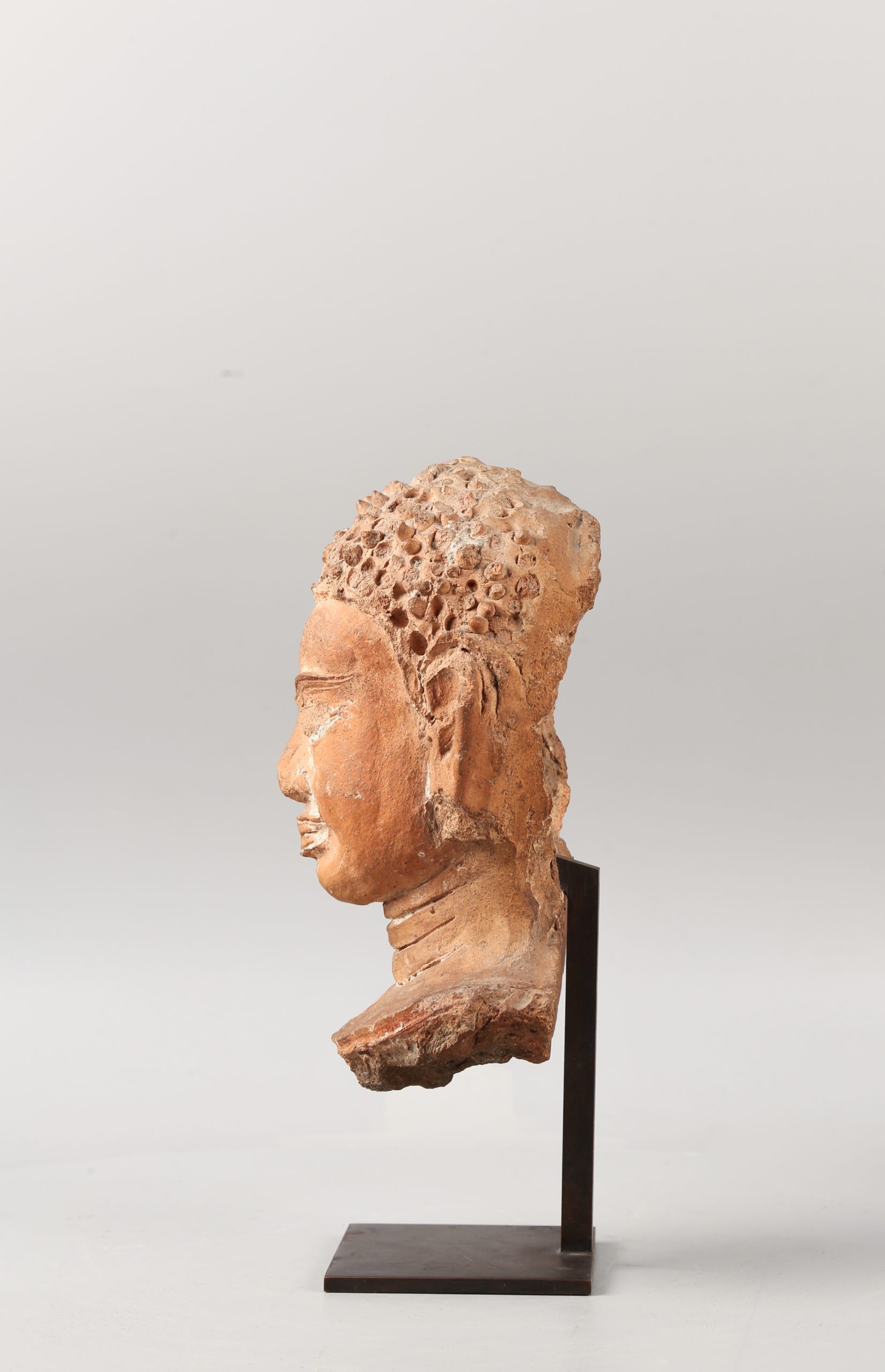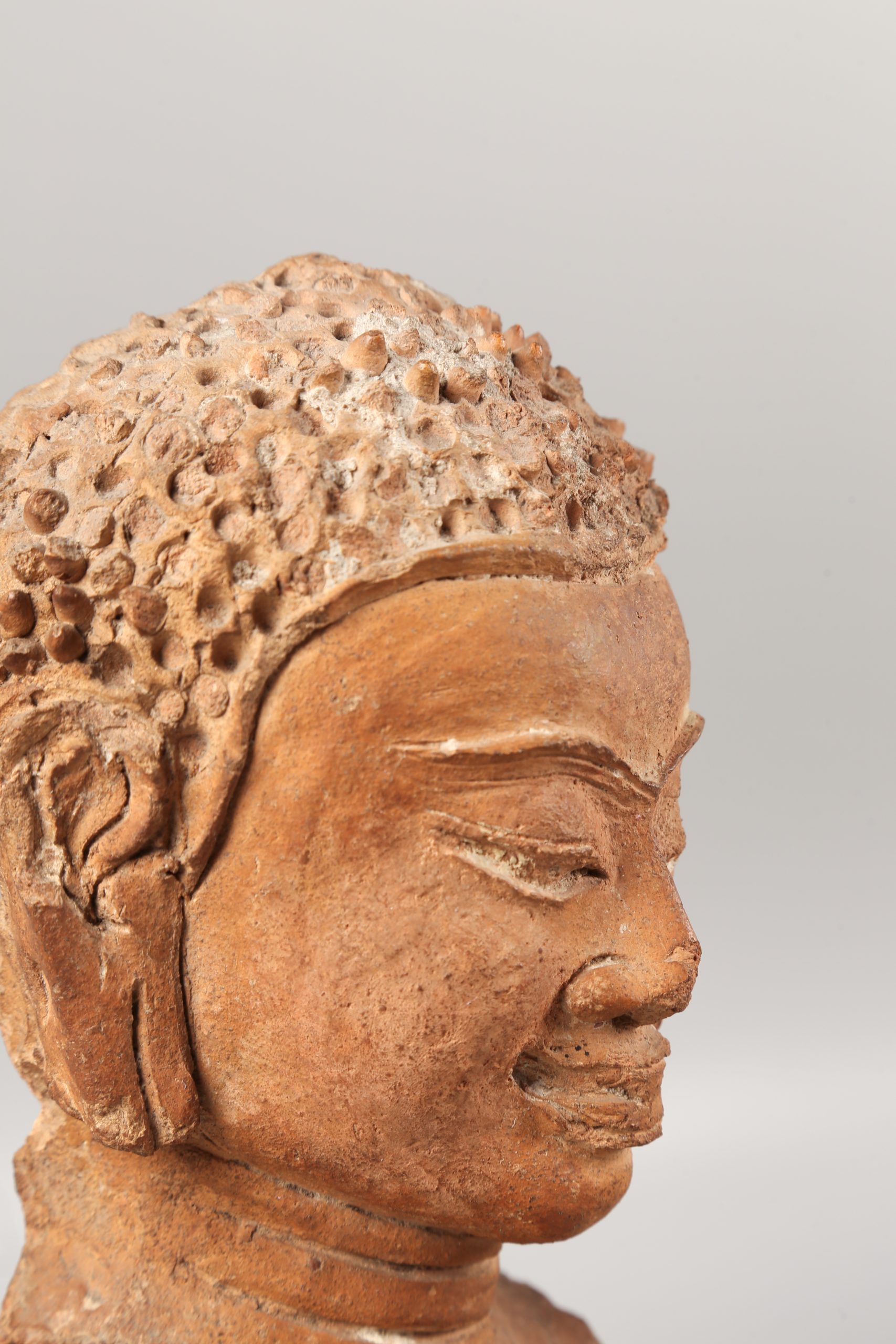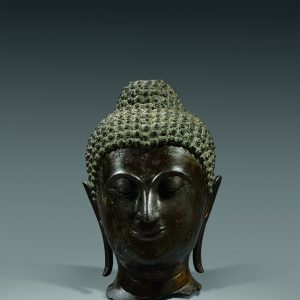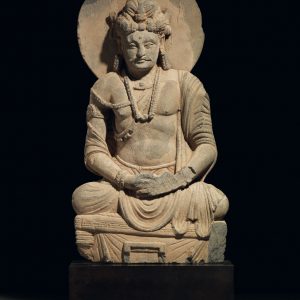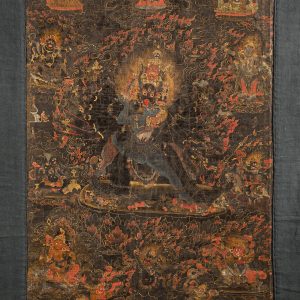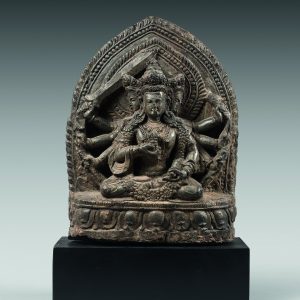Buddha head
Terracotta
Thailand
13th century, Haripuñjaya style
H. 21 cm
Description
The kingdom of Haripuñjaya was founded in the 8th century by a dynasty of Mon emigrants from Lop’burī, where the artistic tradition of Dvāravatī was flourishing. It lasted until 1292, when Lamphun, its capital, was taken by the Thais of the Lanna kingdom.
It developed alongside the Dvāravatī kingdom and the Khmer kingdom of Lop’burī, both of which brought clearly identifiable stylistic influences. The art of Harīpunjaya is the original combination of these artistic contributions, giving rise to sculptures of remarkable expressiveness. The expressive character of the Mon features can be seen in this piece: the broad face with a forehead that flares out at the temples, the high, well-defined cheekbones, the broad nose and full lips hemmed with a thick double line. The eyes are flush with the face and the upper eyelid is lowered. The eyebrows, supporting the gaze, form a continuous, slightly undulating line. The hair, defined by a characteristic border, is made up of spiky conical curls that were traditionally modelled separately and then applied.
Provenance: A. B. Griswold, Josette Schulmann collection in 1975, then private collection, Meerbusch.
Publication: Alexander B. Griswold, The arts of Thailand, 1960, cat. 36, p. 65.
Exhibition: The arts of Thailand, travelling exhibition between 1960 and 1962, United States, directed by M. C. Subhadradis Diskul, curator at the National Museum of Bangkok.

